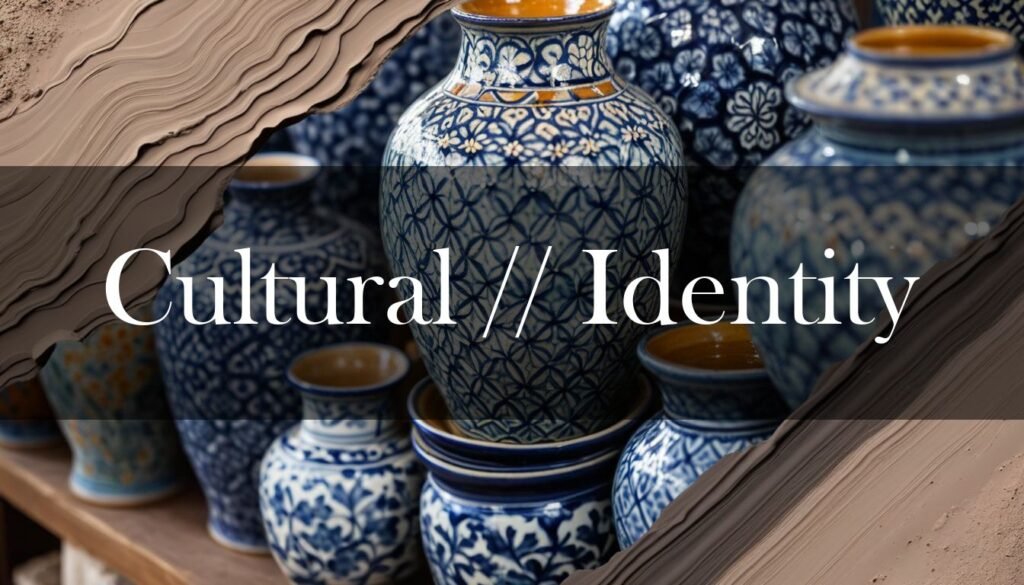Pottery is much more than just functional or decorative objects; it’s a vibrant narrative of cultural identity, social status, and historical continuity. The motifs, designs, and forms seen in pottery are not random but deeply symbolic, reflecting the beliefs, values, and stories of the cultures that create them. Pottery has served as a canvas for expressing cultural narratives, indicating social standing, preserving cultural heritage, and showcasing unique techniques.
Across civilizations, pottery has been a marker of social status. In ancient Mesopotamia, intricate ceramics with elaborate designs were commissioned by the elite, while the lower classes used more utilitarian pottery with simpler designs. Similarly, in ancient Greece, black-figure amphorae adorned with mythological scenes were status symbols among the wealthy. Archaeological discoveries further highlight this, with high-status individuals often buried with ornate pottery, signifying wealth and prestige. More information about this can be found when learning about how pottery relates to social status.
“The discovery of pottery fragments in archaeological sites provides archaeologists with valuable insights into past cultures. Pottery can provide information about the culture’s technology, trade, economy, and social organization.”
Pottery also plays a crucial role in preserving cultural heritage. It serves as a tangible record of ancient societies, offering insights into their daily lives, artistic expressions, and spiritual practices. For example, the Pueblo people of the American Southwest have a rich tradition of pottery that holds ceremonial significance and reflects their cultural and spiritual beliefs. The Kalpouregan village in Iran is renowned for its ancient pottery-making traditions, preserved for thousands of years, with designs passed down through generations. Furthermore, the Moche culture of Peru used ceramics characterized by symbolic and religious imagery, providing insights into their societal structures and beliefs. You can learn more about cultural preservation by reading this article.
The techniques used in pottery making are often unique to specific cultures, reflecting their histories, environments, and artistic expressions. Japanese Raku ware, with its hand-shaped tea bowls and unique firing process, is closely tied to the Japanese tea ceremony. In Greece, traditional potters like Dimitris Kouvdis use local clay and traditional kilns to preserve ancient techniques. Serbian Zlakusa pottery involves hand-crafting clay dishes and firing them over an open flame, using materials sourced from nearby areas. Additional techniques are discussed in this article.
One such technique is Kintsugi, the Japanese art of repairing broken pottery with gold. See the video below for more information:
The movement of pottery styles and techniques between cultures has also significantly impacted artistic expression and cultural identity. For instance, Greek pottery techniques influenced the Etruscans, while Islamic pottery’s lustreware influenced European ceramics. Chinese porcelain, highly sought after in Europe, led to the development of new porcelain types, and Japanese Raku ware influenced Western art. These examples demonstrate how pottery has facilitated cultural exchange, influencing artistic expression and shaping cultural identities across different societies and historical periods.




